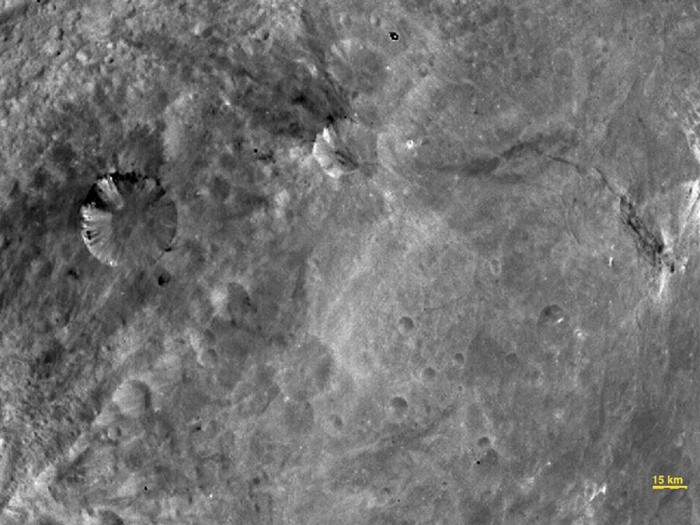NASA Discovers Possible Signs of Water on Mars

NASA announced that its Mars Reconnaissance Orbiter (MRO) has found potential signs of water on the surface of the Red Planet.
“If there’s water, there’s life,” said Michael Meyer, Mars Exploration Program lead scientist, NASA.
Alfred McEwen, planetary geologist at University of Arizona in Tucson, said that imaging of Mars has shown signs of historical flowing water movements on the Martian surface – namely, dark streaks which appear to form in the summer, then disappear during the winter.
At one Martian crater, McEwen said, about a thousand “water flows” were identified.
“We expect water on Mars to be briny and salty,” he said. “Salt depresses the freezing point of the water.”
However, McEwen cautioned these images suggest only circumstantial evidence of water on Mars.
The latest findings suggest signs of water in lower latitudes of Mars. Previously, it was known that water (in the form of ice) existed at the poles of the planet.
“Water is closer to the equator than we thought before,” a NASA scientist said, at a temperature where it could exist in a liquid form.
Lisa Pratt, bio-geochemist, Indiana University, in Bloomington, called it an “eye-opening discovery” and could prompt a more serious search for signs of life on Mars in future orbital and landing missions.
She suggested the closest analogue to the Martian landscape is the Siberian permafrost.
MRO has been orbiting the Red Planet since 2006.
MRO is managed by the Jet Propulsion Laboratory, a division of the California Institute of Technology in Pasadena, Calif., for NASA's Science Mission Directorate in Washington.
© Copyright IBTimes 2024. All rights reserved.





















